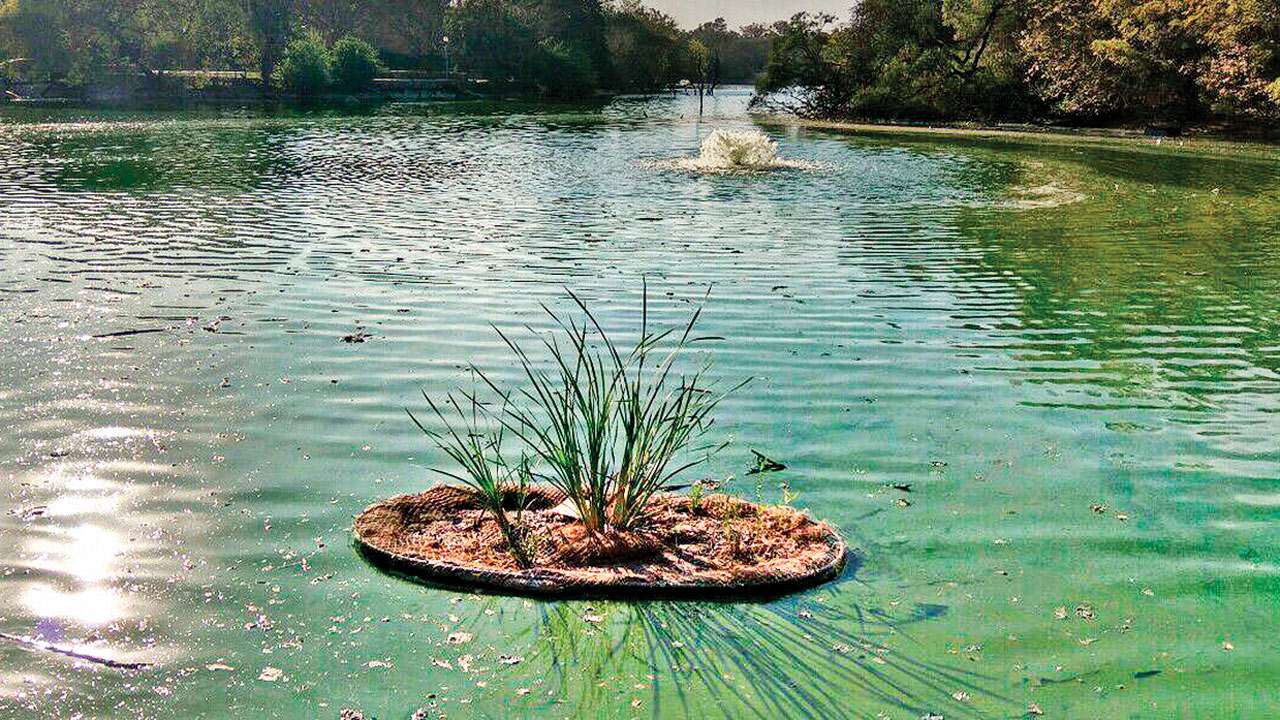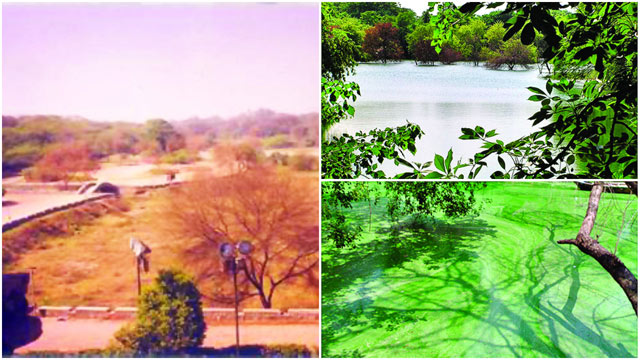
Built in the early 14th century by Alauddin Khalji to provide water to the new city of Siri and his military camp, Hauz Khas lake dried up sometime in the late 20th century. "As the surrounding area urbanised, people started digging tube wells and the water level went down. Besides, the lake bed is very porous and so any amount of water that accumulated because of rainfall would disappear very fast," says Manu Bhatnagar, principal director of the Natural Heritage Division of NGO Indian National Trust for Art and Cultural Heritage (INTACH), which proposed to revive the lake in late 90s and spent several years lobbying with government agencies before the Delhi Development Authority (DDA) accepted his proposal sometime in 2003. INTACH spent the next four years trying out various ways to revive the lake.
"After failing to revive it with rainwater, we realised that it can't be revived unless filled completely. So we thought of bringing treated effluent water from the Vasant Kunj Sewage Treatment Plant, which flows down a storm water channel in Sanjay Van. The treated effluent was upgraded at the check dams on this channel using floating aquatic plants like duckweeds," says Bhatnagar. Once the Hauz Khas lake was filled to full capacity, several species of fishes were brought to maintain a healthy ecosystem and floating aerator jets were placed to add to the dissolved oxygen levels in the water. Soon, birds like the Indian spot-billed duck, Common coot, Common pochard, Mallard and White-throated kingfisher started making an appearance at the lake and its surroundings.

(Clockwise: The dry Hauz Khas in 2003; Hauz Kaus lake post revival; The now polluted Hauz Kaus lake after mismanagment)
However, over the years, a patch of green algae has covered the lake entirely. Bhatnagar blames it on mismanagement by DDA who failed to maintain duckweeds at check dams. "In 2012, INTACH was approached for a solution and we advised bioremediation techniques under which bacteria that would feed on algae for food would be introduced in the lake. This would allow sunlight to penetrate through the waters, enabling submerged plants to photosynthesise and would also enable several micro-organisms to survive and perform their roles in the lake ecology. But DDA failed at maintaining this process as well."
"DDA is an engineering and planning organisation, but lake management involves a lot of science. So they are reluctant to get into a field they are not familiar with. Also, in a governmental organisation, if somebody sticks his neck out and something goes wrong, the punishment is very clear and the reward, unknown," Bhatnagar adds.
British environmental and civil engineer Tarun Sebastian Nanda and Debayani Panja, a project manager, have proposed a permanent and cheaper solution – artificial floating wetlands, costing about Rs 5,000 for a two square metre patch. These submerged plants, says Nanda, would soak up the lake's pollutants and clean the water naturally.
His company Evolve Engineering was first to float such a wetland on Hauz Khas in November last year, and 26 more have been added since. But, the results aren't visible yet. Nanda, who recently got a corporate sponsor, says it will take another year as he plans to plant between 500-1,000 floating wetlands in the coming three months. Could the floating wetland method work? Time will tell.
While there's been a lot of noise about reviving lakes of late and budgets being allocated for the purpose, there have been very few success stories so far. Water activist and Yamuna Jal Abhiyan convenor Manoj Misra questions the approach of government agencies working in this area and blames it on lack of understanding.
"People are going for beautification of water bodies instead of improving the water quality. The biggest problem is that we see just the lake, but if it is a natural lake then it is a natural depression which collects water from all over its catchment. It can't be restored unless its catchments are too. For example, in Sanjay Van, houses have been constructed in the catchment area. People are not looking at lake restoration in a holistic way. While cleaning the lake is one part, the other is to fix the catchment and desilt the bottom of the lake," he says, citing the example of the lake at Purana Qila which has been covered in concrete. "How can you do that to a lake when it helps recharge ground water? Here you are not restoring the lake but creating a recreational spot."
Misra also blames the colonial hangover. "The relationship between people and water bodies has died. When residents were primary stakeholders, they took care of the lakes themselves. But when the state took over the management of water bodies from the community, the people lost interest in these. Britishers did it for revenue generation and we continued to go about it in the same manner post-Independence."
In Mumbai's Kandivali area, environmental activist Mili Shetty decided to clean a part of Charkop Lake and sought help from friends and acquaintances. They started spending two-hours each Sunday to remove garbage using basis medical gloves and bin bags. As each weekend passed, more nature lovers and NGOs joined hands and even BMC staff lent their equipment. By the end of the twelfth weekend, Charkop Lake had been drastically and visibly transformed.